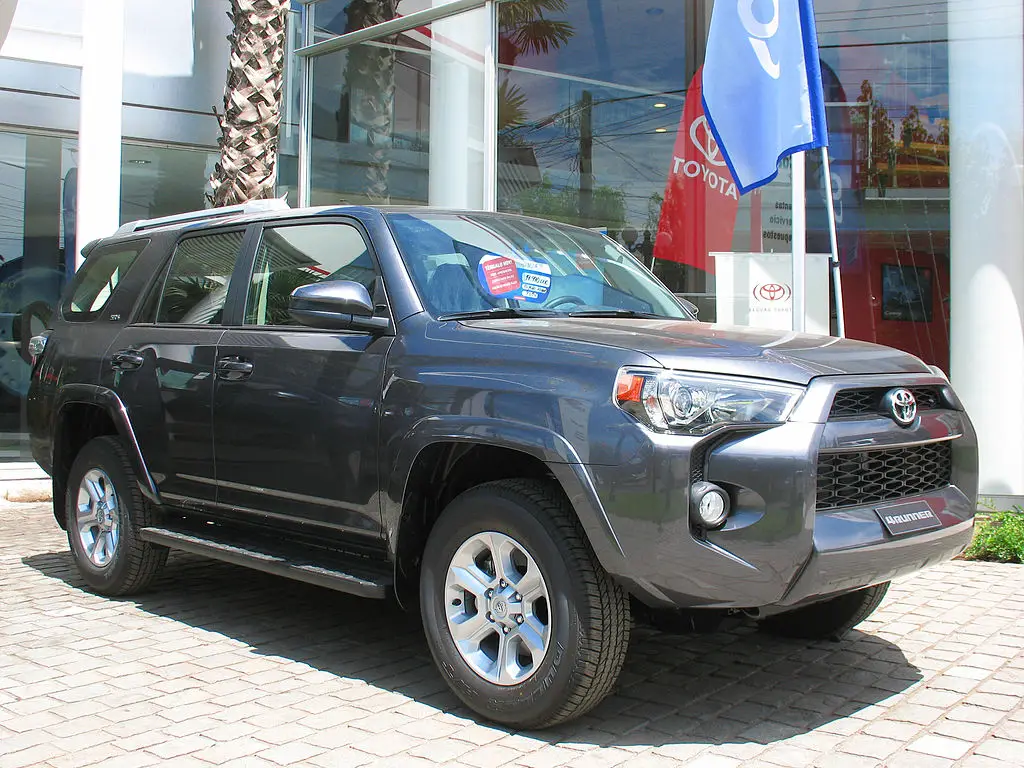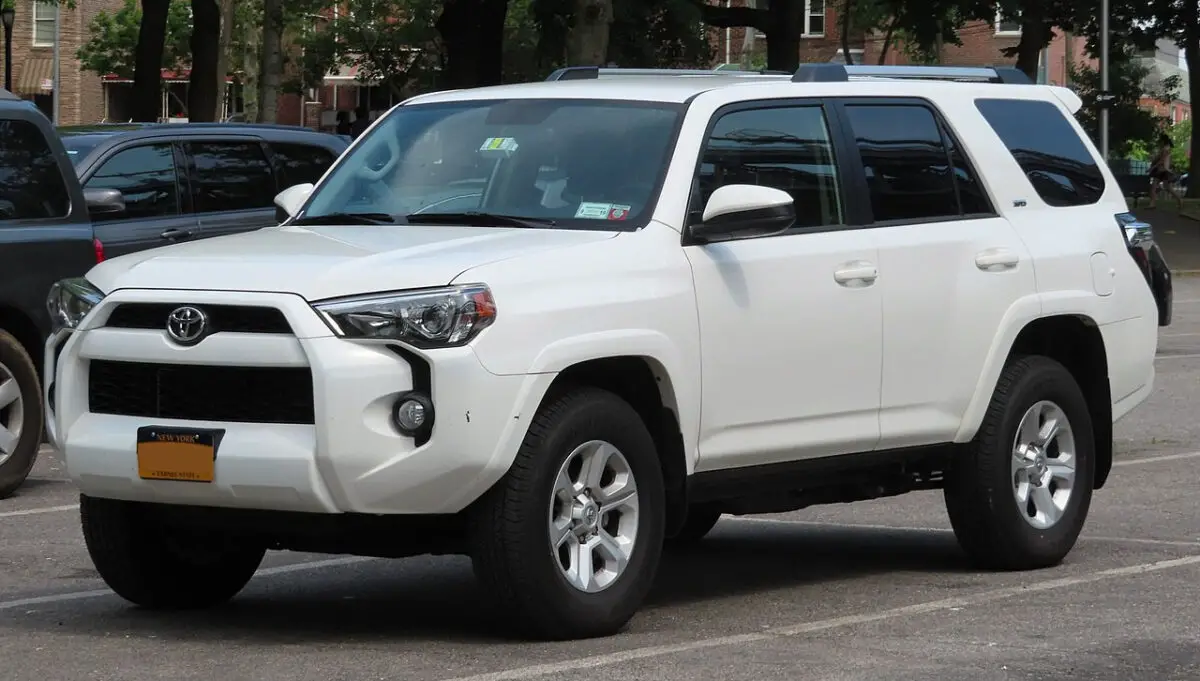In This Article Show
I’ve always been passionate about understanding the nuts and bolts of different vehicles, from compact city cars to off-road beasts like the 4Runner. Over the years, I’ve discovered that my in-depth practical knowledge can serve as a valuable resource for others, and so, here I am, sharing insights through my blog posts.
Today, we will discuss the Toyota 4Runner, an SUV with a reputation for its rugged off-road capabilities and comfortable on-road demeanor.
If you’re a potential buyer or just someone interested in cars, you might have wondered – are all 4Runners 4-wheel drive? The answer isn’t as straightforward as you might think.
Are all 4Runners 4WD? Quick Answer: No, not all Toyota 4Runners are four-wheel drive (4WD). While the 4Runner is renowned for its off-road capabilities, Toyota has manufactured both 2WD (rear-wheel drive) and 4WD variants throughout its history. The base models are typically 2WD, while higher trim levels like the TRD Off-Road, TRD Pro, and Limited editions usually come equipped with 4WD systems.
History and Evolution of 4Runner
Venturing into the heart of the 4Runner’s origins, we travel back to 1984 when Toyota introduced this beast of a vehicle to the world. The 4Runner, initially, was little more than a pickup truck – the Hilux, to be precise – with a fixed shell over the back. It was a utility vehicle, a robust workhorse that could navigate tough terrains without flinching.
Throughout the 1980s and 90s, the 4Runner transitioned through a series of design changes. The second generation, launched in 1989, was when it truly started to morph into the SUV we recognize today. Toyota gave the 4Runner a more family-friendly makeover, introducing four doors and boosting the interior comforts without compromising its off-road prowess.
The third-generation 4Runner, launched in 1995, cemented its position as a favorite amongst off-road enthusiasts. With a new chassis and an optional V6 engine if you don’t want the standard V8 engine version, the 4Runner was more capable and comfortable than ever before. Notably, the mid-1990s also saw a rise in the demand for SUVs.
The 4Runner, with its blend of rugged utility and family-friendly design, fit perfectly into this growing market.
The fourth and fifth-generation 4Runners, launched in 2002 and 2009, further evolved with comfort, power, and technology improvements. The introduction of the 4.0L V6 engine, the shift towards a more refined interior, and the inclusion of advanced safety features are all hallmarks of these generations.
Today, the 4Runner stands tall in its sixth generation, introduced in 2019. With a refreshed exterior design, updated infotainment system, and advanced safety features, it’s an SUV that combines traditional toughness with modern comforts.
Throughout these generations, one thing has been a constant – the option of a four-wheel-drive system.

Understanding Four-Wheel Drive (4WD)
Before we further delve into the 4Runner’s drive systems, it’s important to understand what a four-wheel drive (4WD) is and its benefits.
In essence, 4WD refers to a type of drivetrain that can simultaneously provide torque to all its wheels. Whether it’s a full-time system that’s always engaged or a part-time system that you can manually engage or disengage as per driving conditions, the key idea behind 4WD is the distribution of power to both the front and rear wheels of the vehicle.
The advantages of 4WD are most noticeable when you’re tackling challenging terrains or tough weather conditions. By delivering power to all wheels, 4WD vehicles offer improved traction, which is particularly useful on muddy, snowy, or uneven surfaces. In simple terms, a 4WD system provides enhanced control and stability when it’s needed the most.
Moreover, 4WD vehicles, like certain 4Runner models, often come equipped with low-range gearing. This feature further boosts the vehicle’s off-road capability by enabling slow, controlled movement over particularly difficult terrain, like when navigating steep inclines or rocky paths.
That being said, the 4Runner is not a one-size-fits-all 4WD vehicle. Over the years, Toyota has offered both 4WD and 2WD models, giving buyers the flexibility to choose based on their needs and driving habits. But which models come with what type of drive? Let’s break it down in the next section.

Are All 4Runners 4WD?
When you think about the Toyota 4Runner, it’s easy to associate it with 4WD given its off-road prowess. However, the reality is that not all 4Runners are 4WD. Over the years, Toyota has manufactured and marketed both 4WD and 2WD variants, tailoring to a broad spectrum of customer needs and preferences.
In most generations, the base models of the 4Runner are typically rear-wheel drive (RWD), also known as 2WD. For many buyers, especially those who plan to use the 4Runner as a daily driver in urban or suburban areas, the 2WD variant offers a blend of practicality and affordability.
On the other hand, the higher trim levels, such as the TRD Off-Road, TRD Pro, and Limited editions, usually come equipped with a 4WD system. These models are designed for drivers who crave off-road adventures or live in areas where road conditions can get rough due to weather or terrain.
It’s also worth noting that the type of 4WD system can vary between models. Some 4Runners come with a part-time 4WD system, which allows drivers to switch between 2WD and 4WD as needed. Others, like the high-end Limited model, offer a full-time 4WD system with a locking center differential, providing superior traction and stability regardless of the driving conditions.
So, in a nutshell, while many 4Runners are 4WD – and the model is indeed renowned for its 4WD capabilities – it’s not a standard feature across all variants. Understanding this is crucial for potential buyers as it can significantly impact the vehicle’s performance, price, and suitability for different driving scenarios.
Comparison of 4WD and 2WD in 4Runners
Deciding between a 4WD and a 2WD 4Runner is not a decision to be taken lightly, as each brings its own set of strengths to the table. Let’s break down the main differences, comparing performance, driving conditions, and maintenance and cost factors.

Performance Comparison
In terms of raw power and torque, there’s little difference between the 2WD and 4WD 4Runner variants, as they typically come with the same engine options. However, where they distinctly differ is how they handle various driving conditions.
A 4WD 4Runner will generally provide superior traction on challenging terrains or in adverse weather, thanks to its ability to simultaneously distribute power to all wheels.
Comparison in Different Driving Conditions
If your driving is primarily on paved city roads or highways, a 2WD 4Runner might serve your needs perfectly. They tend to be lighter (due to less complex drivetrain components) and slightly more fuel-efficient than their 4WD counterparts.
However, if you live in an area prone to heavy snowfall, or if you’re an outdoor enthusiast who enjoys off-roading adventures, a 4WD 4Runner could be your ideal companion. A 4WD 4Runner can comfortably and safely navigate through mud, snow, and rough terrains with its enhanced grip and traction.
Maintenance and Cost Comparison
While the upfront cost for a 4WD 4Runner is typically higher than the 2WD variants, the overall maintenance costs can also be a bit steeper for the 4WD version.
4WD systems have more moving parts, which means there’s potentially more that can require repair or replacement over time. Also, a 4WD vehicle tends to be less fuel-efficient than a 2WD vehicle, leading to higher gas pump costs.
Whether a 2WD or a 4WD 4Runner is the right choice depends on your driving habits, the conditions you’ll most often be driving in, and your budget.
Frequently Asked Questions
Can I convert a 2WD 4Runner to a 4WD?
While technically possible, converting a 2WD 4Runner to a 4WD is complex and costly. It involves substantial modifications and can also affect the vehicle’s warranty. If you’re considering such a conversion, it’s advisable to consult with a professional mechanic or a Toyota dealership.
Do all 4Runner models have a locking differential?
Not all 4Runner models come with a locking differential. Usually, this feature is found in higher-end 4WD models like the TRD Off-Road and TRD Pro. A locking differential can be particularly useful for off-roading as it ensures equal power is sent to both wheels, enhancing traction in challenging conditions.
Is a 4WD 4Runner worth the extra cost?
Whether a 4WD 4Runner is worth the extra cost depends on your driving needs and conditions. If you frequently drive in adverse weather, on rough terrains, or enjoy off-roading, the 4WD model could be a worthwhile investment. For city or highway driving in mild conditions, a 2WD model might be sufficient.
Do 4WD 4Runners require more maintenance than 2WD models?
Generally, 4WD vehicles can require more maintenance due to their more complex drivetrain. This can mean more frequent servicing and potentially higher costs over time. However, with regular upkeep and proper care, a 4WD 4Runner can provide reliable, long-lasting service.
Can I drive a 4WD 4Runner in 2WD mode?
Yes, you can. Most 4WD 4Runners have a part-time 4WD system, allowing you to switch between 2WD and 4WD as needed. This flexibility lets you enjoy the fuel efficiency of 2WD during normal driving conditions and the enhanced traction of 4WD when off-roading or during challenging weather.
Wrapping it up
In conclusion, the Toyota 4Runner, a renowned off-road warrior, offers 2WD and 4WD variants across its range, providing options for diverse driving needs and preferences.
While the 4WD models are celebrated for their off-road prowess, it’s important to note that not all 4Runners have this feature as standard.
Therefore, when choosing a 4Runner, it’s crucial to assess your driving habits, conditions, and budget to select the model that best fits your lifestyle. Whether you lean towards a 2WD or a 4WD 4Runner, you’ll invest in a vehicle for reliability, durability, and solid performance.











